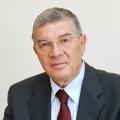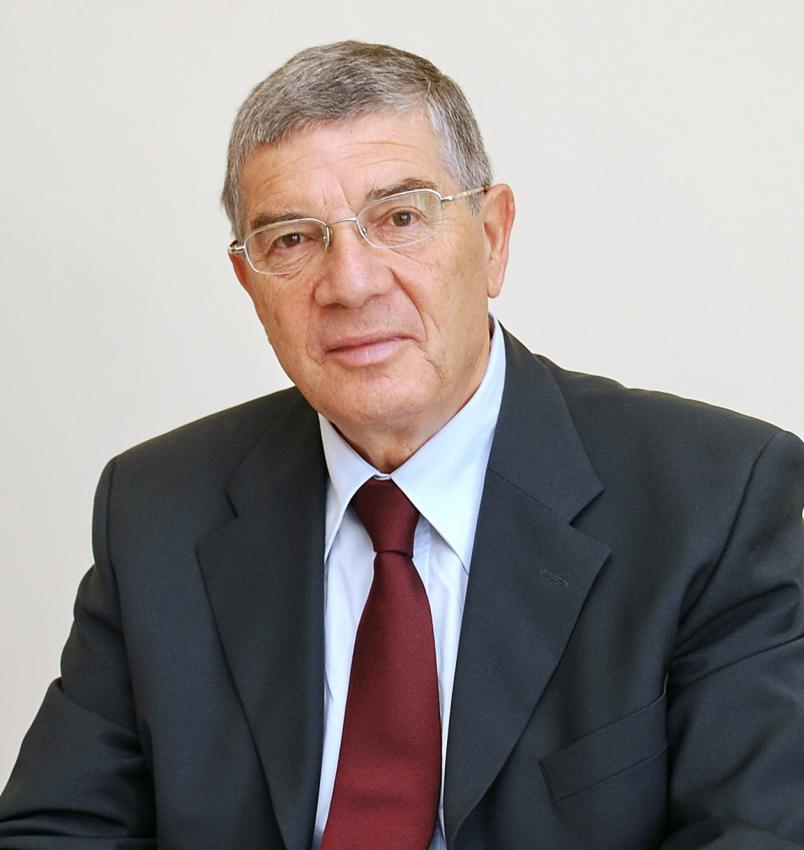Auschwitz-Birkenau, where over one million Jewish men, women and children and approximately 125,000 non-Jews were murdered by the German Nazis, has entered human consciousness as the representation of supreme human evil as well as the ultimate symbol of the Holocaust of the Jewish people – the Shoah. This has found expression in the UN's decision to establish International Holocaust Remembrance Day on January 27, the date the Red Army entered the camp. The extensive scope of research, literature, educational endeavors and actual visits to Auschwitz-Birkenau over the years testifies to its prominent place in the world's culture of memory
Following the end of WWII, the communist authorities in Poland decided to open a Polish state and international museum at Auschwitz I – the former concentration camp. They decided to leave Auschwitz II/Birkenau, the extermination camp located some three kilometers from Auschwitz I, in the state in which it was found upon liberation. A monument was built there, and subsequently a memorial exhibition was added in the "Sauna" building. Alongside the main exhibition of the State Museum at Auschwitz I, the communist authorities facilitated the opening of several national exhibitions in the former prisoner blocks, including a Jewish exhibition in Block 27, dating to the late 1960s. Over the years, these national exhibitions gradually became outdated, both in terms of content as well as of display. The exhibition in Block 27 also became dilapidated and neglected, and most visitors to the camp chose not to enter it at all. Some Jewish and Israeli groups went into the Block for a few minutes of reflection and remembrance for the victims of the Shoah.
In the early 1990s, following the fall of the Iron Curtain, many countries began to modernize their displays at Auschwitz and revise their content. The subject matter of the national exhibitions grew more accurate, now dealing with the fate of their Jewish populations, starting from their lives before the war through their persecution, concentration and eventual deportation to "the East" and their deaths. The State Museum, too, decided to renew its primary exhibition, and recently began a process to that effect. After the 2005 visit of Prime Minister Ariel Sharon to Auschwitz-Birkenau, a decision was made by the Government of Israel, on behalf of the Jewish people, to create a new permanent exhibition in Block 27. Yad Vashem was charged with design and implementation of the new exhibition, to be funded by the State of Israel with aid from the Claims Conference.
Yad Vashem faced a considerable challenge. At the core were three main questions: What should the subject of the new exhibition be? How should it be designed? And how could its subject and design be combined in order to facilitate a brief 20-30 minute visit as part of comprehensive guided tour for visitors to the site, most of whom are young students? Our answers to these questions were largely based on examination of the State Museum's existing displays: their operation, the profile of visits to them, the projected plan of the new central exhibition, and the status of Auschwitz as an arena of Holocaust remembrance.
The current exhibition at the Auschwitz-Birkenau State Museum is replete with impressive and moving original artifacts. The new exhibition will delve more deeply into the fate of the Jews in Auschwitz I and Birkenau.
The new permanent exhibition in Block 27 might have dealt with the fate of the Jews at the concentration and extermination camps of Auschwitz-Birkenau. Alternatively, we could have chosen to contend with the Holocaust of the Jews of Poland alone. We also considered presenting the ways in which the Jews dealt with the Holocaust as it transpired, or their process of returning to life afterwards. However, our examination and consideration brought us to the conclusion that we had to deal with the Shoah – the murder of the Jewish people – in its entirety. Yet instead of creating a historical display that presents Nazi persecution of the Jews prior to their mass murder, we decided to impart, as concisely as possible, the fundamental aspects of the Holocaust, in order that visitors can comprehend how Auschwitz-Birkenau was a component – albeit a central one – of the larger and more complex story of the Shoah.
As the content of the exhibition crystallized, so did its design. We understood that the language of design had to be focused, brief and clear. Basic information had to be integrated within an experience deriving from the exhibition's location at the chillingly authentic site of human history's largest death factory, and we were determined to maintain the connection between the exhibition's interior and its exterior. It was therefore resolved to leave the building's original windows exposed, thus retaining the visitors' unmediated visual connection with the surrounding camp.
It was decided to devote the spaces in the exhibition to the following fundamental questions: What is the definition of "Shoah"? Who were the Jews who were targeted? What were the motivations for the annihilation of European Jewry, and how were the Jews murdered? In what ways did the victims deal with the events of the Holocaust – as Jews and as human beings? And, how comprehensive and widespread was the attempt to obliterate them?
Simultaneously, we were deeply committed to illustrating to the visitors the names of the murdered Jews, each one of them a human being.
This complex process yielded a novel museological concept, a unique design plan that differs from the paths taken to date by other historical museums worldwide. Curators, historians, philosophers, artists and designers all participated and contributed to the plan. Our resulting approach was presented to the exhibition project's Inter-ministerial Committee as well as to its International Advisory Committee, comprised primarily of historians and Holocaust survivors and headed by Prof. Elie Wiesel.
The State Museum's leadership welcomed our concept, viewing it as providing the context that complements its other exhibitions. However, our proposal to position the new Jewish exhibition within the site of the Birkenau extermination camp, where the masses of Jews were gassed and cremated, was rejected, in accordance with the Museum's desire to preserve Birkenau as closely as possible to its authentic condition at the war's end, and not to transform it into a museum display.
At the entrance to the new exhibition "SHOAH", visitors are exposed to a clear definition of the Holocaust, after which their senses are suffused with the words and melody of prayer – a Jewish and universal expression of the human spirit. In the adjoining space, the vibrant, diverse and multifaceted existence of Jews in prewar Europe and North Africa is imparted through a 360-degree cinematic montage that envelopes the visitor, displaying alternating original video excerpts of Jewish life between the wars. Following this sweeping panorama, visitors are confronted with the central tenets of Nazi-German racist ideology, the main motivation behind the Germans' imperative of annihilating the Jewish people. This provides the essential context for the presentations that follow. First is a space that depicts the murder of the Jewish people, containing an enlarged map illustrating the vast geography of the genocide. The following space presents the human struggle with this terrifying new reality, as millions of individuals fought to maintain their personal and communal dignity. The next space is devoted to the 1.5 million Jewish children murdered during the Shoah – an inspired and heartrending compilation of fragments of authentic drawings sketched by Jewish children during the Holocaust, copied by the artist onto the surrounding walls. This is followed by the unprecedented and monumental "Book of Names," which contains the names of the millions of murdered Jews, produced especially for this exhibition. Finally, visitors view the restored lives of the survivors, and have a chance to reflect upon the myriad questions raised by this unprecedented event in human history.
The new exhibition is thus a truly unique expression of the primary dimensions of the Holocaust, placing the human being at its very center. Chapter by chapter it conveys the central themes of the Holocaust, which are not specifically historical, but rather present a profound ethical-cultural dimension of Holocaust remembrance. This is meant to awaken within the visitor a deep, meaningful and reflective experience regarding our fundamental morality as human beings and as members of today's global civilization.
Credits
The exhibition was created by the State of Israel and Yad Vashem, with the assistance of the Claims Conference and in coordination with the Auschwitz-Birkenau State Museum
Chairman of the Inter-Ministerial Steering Committee
Dr. Shimshon Shoshani
Chairman of the International Advisory Committee
Prof. Elie Wiesel
Executive Director and Exhibition Curator
Avner Shalev
Project Manager
Ishai Amrami
Senior Curator
Yehudit Inbar
Historian
Dr. Avraham Milgram
Curator
Rinat Harris-Pavis
Senior Photograph Curator
Nina Springer-Aharoni
Film Production Consultant
Liat Benhabib
Research of Original Film Footage
Efrat Komisar
Acquisition of Original Film Footage
Mimi Ash
Architecture and Design
Studio de Lange Ltd. – Chanan de Lange & Tal de Lange, Shirley Marco
Visual Communication Design
Adi Stern, Yael Burstein, Ori Succary
Exhibition Production Manager
Orit Hall
Construction Management
Shimon Kornfeld – Tafnit Wind Ltd.
Construction Firm
Tomasz Francuz
"Ani Ma'amin, I Believe – Prayer"
Video installation: Hagit Shimoni
"Jewish Life Between the Two World Wars"
Multimedia installation: Niv Moshe Ben David
Produced by 8ND
Music: Moshe Baavour
Sound design: Chen Nevo
"Nazi Antisemitic Ideology"
Sound design: Ishai Adar
"How Jews Coped During the Holocaust" films
Directed by Noemi Schory
Produced by Alona Schory, Belfilms
"Traces of Life," wall drawings and voices
Michal Rovner
"The Book of Names"
Design: Chanan de Lange
Source: The Central Database of Shoah Victims' Names – Hall of Names, Archives Division, Yad Vashem
Production: Information Technology Division, Yad Vashem
"Return to Life"
Multimedia installation: Niv Moshe Ben David
Produced by 8ND
Photography for Online Exhibition: Niv Moshe Ben David, Pawel Sawicki
Related
Opening of New Permanent Exhibition SHOAH in Block 27 at Auschwitz-Birkenau



